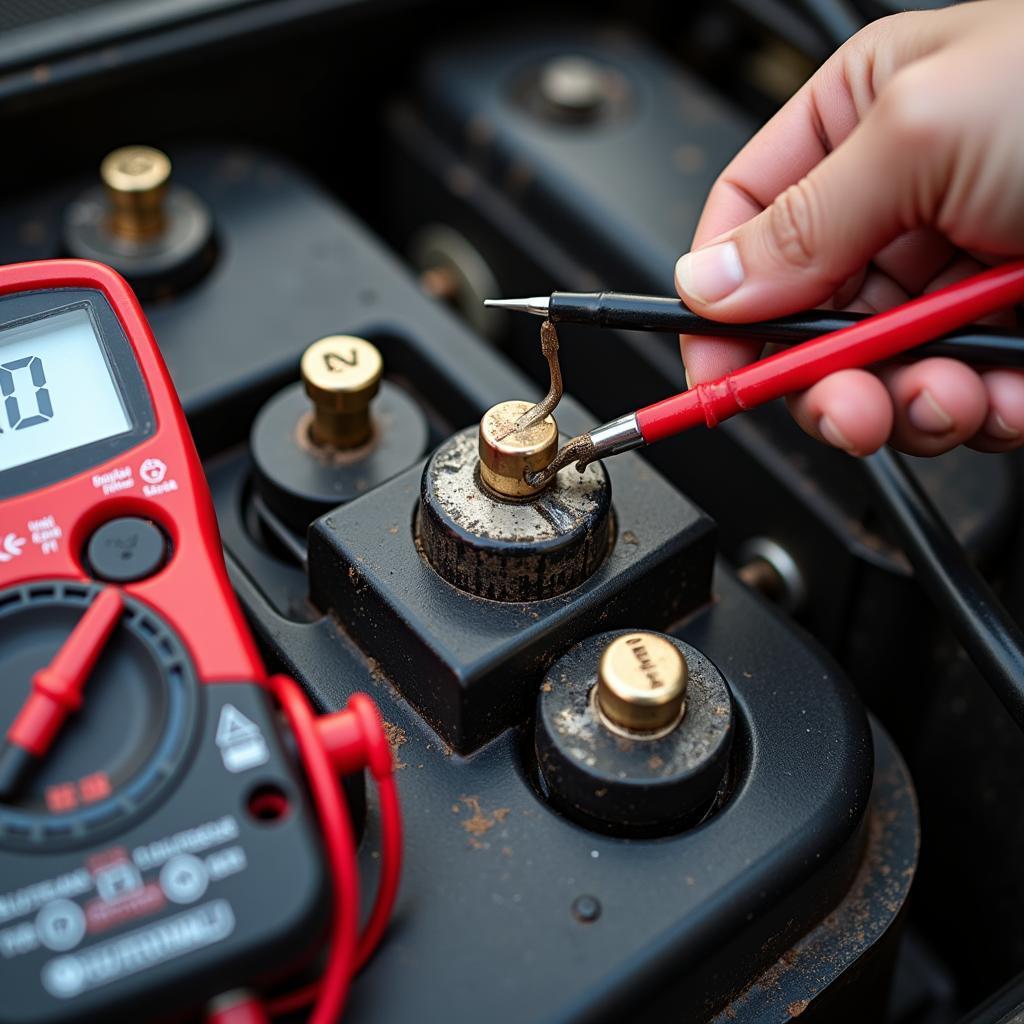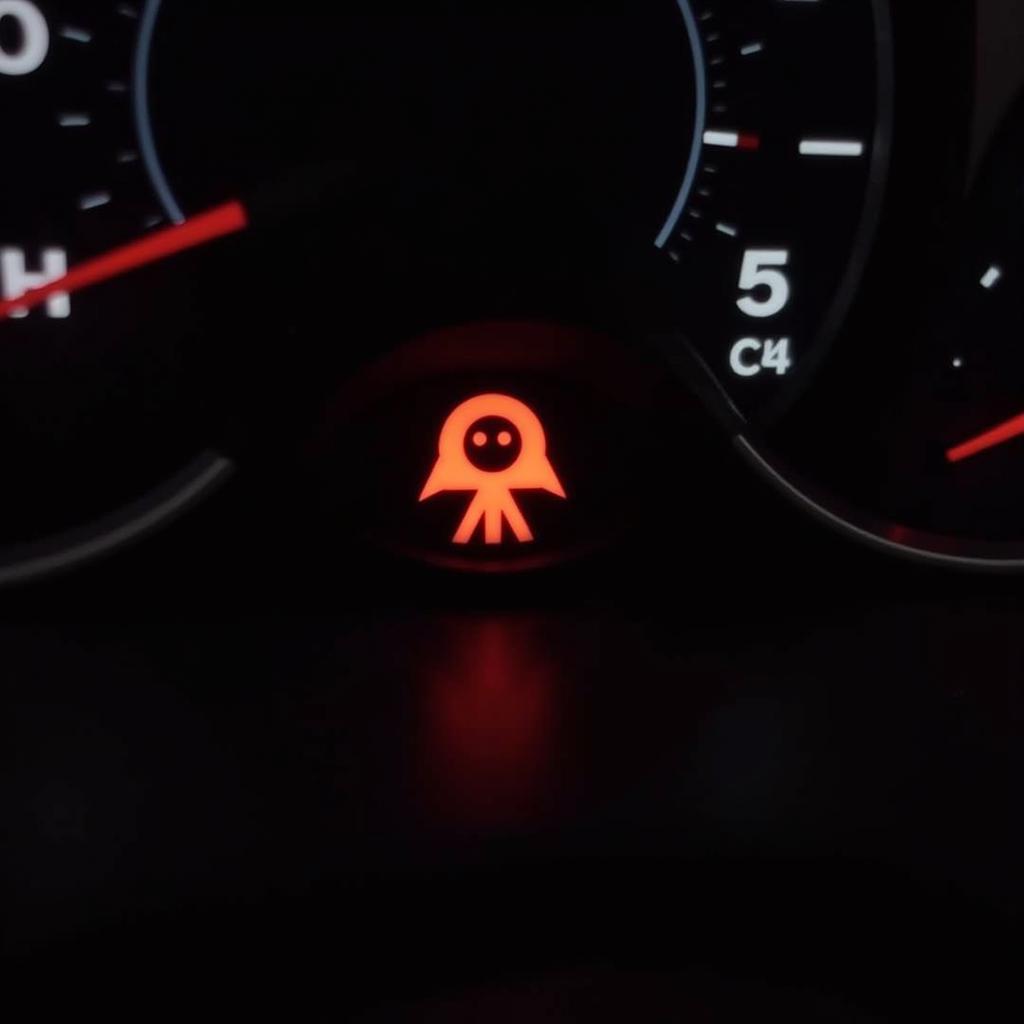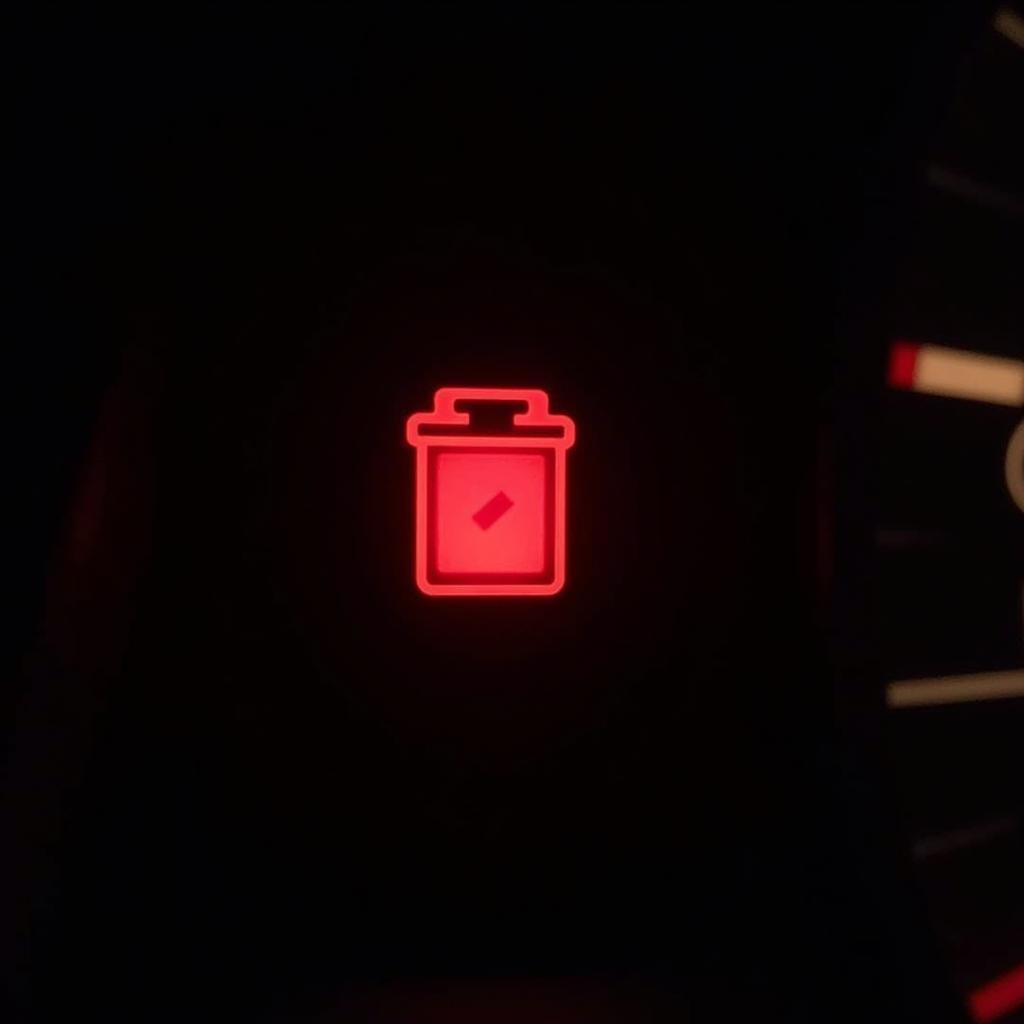A bad cell in a car battery can leave you stranded. This comprehensive guide explores the causes, symptoms, and solutions for dealing with a bad cell, empowering you to tackle this common car issue. We’ll cover everything from testing your battery to preventative measures.
 Testing a Car Battery Cell for Damage
Testing a Car Battery Cell for Damage
What exactly is a “bad cell”? Inside your car battery are a series of lead plates submerged in an electrolyte solution. These plates are grouped into cells, typically six, each producing a little over two volts. When one of these cells fails, it disrupts the entire battery’s ability to hold a charge, leading to starting problems and other electrical issues. If you suspect you have a bad cell, don’t delay troubleshooting.
Identifying a Bad Cell: Key Symptoms and Diagnostic Techniques
How do you know if you have a bad cell in your car battery? Several telltale signs point to this problem. Slow engine cranking is often the first indicator. You might also notice dim headlights, especially when the engine isn’t running. how do i retrieve my avg anti theft password A clicking sound when you turn the key can also indicate a failing battery, though other issues can cause this too. Finally, a rotten egg smell emanating from the battery suggests a damaged cell leaking hydrogen sulfide gas.
Testing for a Bad Cell
A simple voltage test can confirm your suspicions. Using a multimeter, measure the overall voltage across the battery terminals. A healthy battery should read around 12.6 volts. Then, test the individual cells. A significant difference in voltage between cells (more than 0.5 volts) indicates a bad cell. Modern diagnostic tools can also analyze battery health, providing a more detailed assessment.
Common Causes of a Bad Cell
Sulfation, caused by leaving a battery discharged for extended periods, is a common culprit. Extreme temperatures, both hot and cold, can also shorten battery lifespan and damage cells. Overcharging, often due to a faulty alternator, can also lead to cell damage. Finally, physical damage to the battery case can compromise the integrity of the cells.
Dealing with a Bad Cell: Replacement vs. Repair
Unfortunately, a bad cell usually necessitates battery replacement. While some DIY methods claim to revive dead cells, these are rarely effective long-term solutions. how to unlock quick heal anti theft password Replacing the entire battery is the most reliable approach, ensuring dependable starting power and preventing further electrical problems.
Choosing the Right Replacement Battery
When selecting a new battery, consider your vehicle’s specifications and driving conditions. Cold climates require batteries with higher Cold Cranking Amps (CCA). Ensure the battery’s group size matches your car’s requirements for proper fitment.
Preventing Bad Cells: Proactive Maintenance Tips
Proactive maintenance can extend your battery’s life and prevent premature cell failure. Regularly cleaning the battery terminals with a baking soda and water solution can prevent corrosion. Keeping the battery charged, especially during periods of infrequent use, can prevent sulfation. how to recover avg anti theft password Having your charging system checked periodically can also identify potential issues before they damage the battery.
“Regular battery maintenance, like cleaning terminals and checking the charging system, can significantly extend battery lifespan and prevent inconvenient breakdowns,” says John Smith, Automotive Electrical Engineer at AutoTech Solutions. He adds, “Investing in a quality battery and avoiding deep discharges are also crucial for long-term battery health.” Remember, a little preventative care can go a long way.
In conclusion, a bad cell in a car battery is a common issue with noticeable symptoms. While a bad cell typically requires battery replacement, understanding the causes, diagnostic techniques, and preventative measures can help you avoid future problems. By being proactive and informed, you can keep your car starting reliably and avoid the frustration of a dead battery. how to turn off blackberry anti theft feature
FAQ
- Can I jump-start a car with a bad cell? Yes, you can usually jump-start it temporarily, but it’s not a fix.
- How long does a car battery last? Typically, 3-5 years, but various factors influence lifespan.
- Can a bad alternator cause a bad cell? Yes, overcharging can damage battery cells. how to remove blackberry anti theft protection z30
- Is it safe to drive with a bad cell? It’s not recommended, as it can lead to further electrical issues and leave you stranded.
- How much does a car battery replacement cost? Prices vary depending on the battery type and vehicle.
- Can I replace a single cell in a car battery? Not realistically. Replacing the entire battery is the standard procedure.
- How do I dispose of an old car battery? Recycle it at an auto parts store or designated recycling center.



